Best Exercise to Lose Weight with Plantar Fasciitis
Welcome to our guide, on the exercises for losing weight with plantar fasciitis. If you’re experiencing the discomfort of fasciitis, you understand the importance of staying physically active while taking care of your foot health. In this article we will discuss dos and don’ts when it comes to exercising, explore impact cardio and conditioning exercises delve into strength training and abdominal workouts and provide valuable tips on how to shed pounds without worsening your plantar fasciitis symptoms. Whether you’re looking for exercises, expert advice or reliable weight loss strategies specifically tailored for your condition this guide has got you covered. Let’s begin a journey towards maintaining your fitness and well-being while effectively managing plantar fasciitis.
1. Understanding Plantar Fasciitis Plantar fasciitis can be a challenging condition, and understanding its causes and risks is crucial for effective management. This common foot ailment occurs when the thick band of tissue, known as the plantar fascia, which connects your heel to your toes, becomes inflamed. The primary causes include overuse, improper footwear, and strain on the ligaments supporting the arch of your foot.
Identifying the root causes of plantar fasciitis is the first step toward alleviating its symptoms. Overpronation (excessive inward rolling of the foot), high arches, and flat feet can contribute to the development of this condition. Additionally, activities that involve prolonged standing or walking on hard surfaces, such as running or dancing, may increase the risk.
Understanding these causes empowers you to make informed decisions about your activities and footwear, reducing the likelihood of exacerbating plantar fasciitis symptoms.
1.2 Treatments
Once diagnosed, plantar fasciitis can be managed through various treatments. These may include rest, ice application, and the use of orthotic inserts to provide better arch support. Stretching exercises for the Achilles tendon and the plantar fascia itself can help alleviate tension and promote healing.
In severe cases, healthcare professionals may recommend physical therapy, night splints, or corticosteroid injections. It’s essential to consult with a healthcare provider to determine the most suitable treatment plan based on the severity of your condition.
By gaining a comprehensive understanding of the causes and risks associated with plantar fasciitis, you can take proactive steps to mitigate these factors and effectively manage the condition. This sets the stage for exploring exercise options that support your overall fitness goals while being considerate of your foot health.
2. Exercise Guidelines for Plantar Fasciitis
Living with plantar fasciitis doesn’t mean giving up on exercise. In fact, staying active is crucial for maintaining overall health and managing weight. However, it’s essential to follow specific guidelines to ensure that your exercise routine doesn’t exacerbate plantar fasciitis symptoms. Let’s explore the dos and don’ts, differentiate between low-impact and high-impact activities, and emphasize the importance of incorporating stretching into your routine.
2.1 Dos and Don’ts
Understanding what exercises to embrace and which ones to avoid is key to preventing further strain on the plantar fascia. Dos include low-impact activities such as swimming, cycling, and elliptical training. These exercises provide cardiovascular benefits without subjecting your feet to excessive stress.
On the flip side, it’s crucial to avoid high-impact activities like running or jumping, as they can worsen inflammation and lead to increased pain. High-impact exercises place additional strain on the plantar fascia, hindering the healing process.
2.2 Low-Impact vs. High-Impact Activities
Low-impact exercises are your allies in managing plantar fasciitis. Activities such as swimming and cycling offer a cardiovascular workout without subjecting your feet to the pounding associated with high-impact exercises. These alternatives reduce stress on the plantar fascia while allowing you to stay active and burn calories.
In contrast, high-impact activities like running or intense aerobics can exacerbate plantar fasciitis symptoms. The constant pounding and pressure on the feet can lead to increased inflammation and pain. Opting for low-impact alternatives ensures a more sustainable and comfortable exercise routine.
2.3 Importance of Stretching
Incorporating stretching exercises into your routine is essential for maintaining flexibility and preventing further strain on the plantar fascia. Focus on gentle stretches for the calf muscles, Achilles tendon, and the plantar fascia itself. These stretches help alleviate tension and promote blood circulation, contributing to the overall healing process.
A consistent stretching routine can also enhance your range of motion and reduce the risk of injury. It’s advisable to perform these stretches as part of both your warm-up and cool-down to ensure your muscles and ligaments are adequately prepared for exercise.
By adhering to these exercise guidelines, you can strike a balance between staying active and managing plantar fasciitis effectively. In the following sections, we’ll delve into specific exercises tailored to accommodate and support individuals with plantar fasciitis.
3. Cardio Exercises for Plantar Fasciitis
Maintaining cardiovascular fitness is crucial for overall health, and having plantar fasciitis doesn’t mean you have to forgo cardio workouts. In this section, we’ll explore a range of low-impact cardio exercises that are gentle on the feet while providing an effective cardiovascular workout.
3.1 Stationary Cycle
The stationary cycle is an excellent low-impact option for individuals with plantar fasciitis. Cycling helps elevate your heart rate without putting excessive strain on your feet. Adjust the resistance to your comfort level and engage in a steady cycling routine for a great cardiovascular workout.
3.2 Hand Cycle
For those looking to diversify their cardio routine, a hand cycle is a fantastic alternative. This seated exercise targets the upper body and arms, allowing you to achieve a cardiovascular workout without involving the feet. It’s a great option for individuals with severe plantar fasciitis symptoms.
3.3 Swimming
Swimming is a highly recommended cardio exercise for individuals with plantar fasciitis. The buoyancy of the water reduces impact on the feet while providing a full-body workout. Whether you engage in laps or water aerobics, swimming is an effective way to maintain cardiovascular fitness without aggravating foot pain.
3.4 Rowing
Rowing machines offer a low impact yet comprehensive cardiovascular workout. The fluid motion of rowing engages multiple muscle groups without subjecting your feet to excessive pressure. Ensure proper form to maximize the benefits while minimizing strain on the plantar fascia.
3.5 Elliptical
The elliptical trainer is another low-impact option that mimics the motion of running without the jarring impact. It allows for a smooth, continuous motion that engages both upper and lower body muscles. Adjust the resistance and incline to tailor the intensity to your fitness level.
Incorporating these low-impact cardio exercises into your routine not only supports cardiovascular health but also ensures that you can stay active without worsening plantar fasciitis symptoms. As we move forward, we’ll explore conditioning and strength exercises that further cater to individuals dealing with plantar fasciitis.
4. Conditioning Exercises
Conditioning exercises play a vital role in maintaining overall fitness while managing plantar fasciitis. These exercises focus on improving strength, flexibility, and stability, contributing to a well-rounded and supportive exercise routine.
4.1 Battle Ropes
Battle ropes are an excellent conditioning exercise that engages various muscle groups. This low-impact workout helps improve cardiovascular fitness and builds strength in the arms, shoulders, and core. The rhythmic motion of the ropes allows for intensity control, making it suitable for individuals with plantar fasciitis.
4.2 Sprints
While traditional running sprints might be high-impact and unsuitable for plantar fasciitis, low-impact alternatives such as cycling sprints or aquatic sprints can be incorporated. These exercises maintain the cardiovascular benefits of sprints without subjecting the feet to excessive stress.
Incorporating conditioning exercises into your routine enhances overall fitness and complements the low-impact cardio exercises discussed earlier. As we delve into strength exercises in the following section, we’ll explore targeted workouts to address specific muscle groups while keeping plantar fasciitis in mind.
5. Strength Exercises
Building strength is a fundamental aspect of any fitness routine, and individuals with plantar fasciitis can still engage in strength training with careful consideration. In this section, we’ll explore both lower body and upper body strength exercises that cater to the specific needs of those dealing with plantar fasciitis.
5.1 Lower Body Strength
5.1.1 Leg Curl
The leg curl is an effective lower body exercise that targets the hamstrings without putting excessive strain on the feet. Use a leg curl machine or resistance bands to perform controlled movements, focusing on strengthening the posterior chain.
5.1.2 Leg Extension
Leg extensions help isolate and strengthen the quadriceps. Ensure proper form and controlled movements to minimize stress on the knees and feet. Adjust the machine settings or use resistance bands to tailor the intensity to your fitness level.
5.1.3 Band Swings
Using resistance bands for leg swings provides a dynamic lower body workout. This exercise engages the hip flexors, glutes, and thighs without requiring high-impact movements, making it suitable for individuals with plantar fasciitis.
5.2 Upper Body Strength
5.2.1 Bench Press
The bench press is a classic upper body strength exercise that targets the chest, shoulders, and triceps. Performing this exercise while seated or with proper foot support minimizes pressure on the feet, making it accessible for those with plantar fasciitis.
5.2.2 Pull Ups
Engaging in pull-ups strengthens the upper back, arms, and core. Use an assisted pull-up machine or resistance bands to tailor the intensity to your fitness level. Pay attention to form and avoid excessive strain on the feet.
5.2.3 Dips
Dips are effective for working the triceps and chest. Use parallel bars or a sturdy surface to perform controlled dip movements. Adjust the difficulty by varying the height of the bars or using assistance as needed.
5.2.4 Push Ups
Push-ups are a versatile exercise that targets the chest, shoulders, and triceps. Performing push-ups on an incline or with knees on the ground can reduce pressure on the feet while still providing a challenging upper body workout.
Incorporating these lower and upper body strength exercises into your routine ensures a comprehensive and balanced approach to fitness. As we explore ab exercises in the next section, we’ll continue to provide options that accommodate individuals with plantar fasciitis.
6. Ab Exercises
Maintaining core strength is essential for overall stability and posture, and individuals with plantar fasciitis can engage in ab exercises that minimize stress on the feet. In this section, we’ll explore effective ab workouts that cater to the specific needs of those dealing with plantar fasciitis.
Sit-ups are a classic ab exercise that can be modified to reduce pressure on the feet. Performing sit-ups on a decline bench or with raised legs helps engage the core without overloading the plantar fascia. Ensure controlled movements and focus on proper form.
6.2 Ab Wheel
The ab wheel rollout is a challenging yet effective exercise for targeting the entire core. Kneel on a soft surface and roll the wheel forward, extending your arms while engaging the core. This exercise minimizes impact on the feet while providing an intense ab workout.
6.3 Reverse Crunch
The reverse crunch is a great alternative to traditional crunches, placing less strain on the lower back and feet. Lie on your back, bring your knees toward your chest, and lift your hips off the ground. This movement targets the lower abdominal muscles without causing discomfort in the feet.
Incorporating these ab exercises into your routine helps strengthen the core without exacerbating plantar fasciitis symptoms. As we move forward, we’ll explore stretching exercises that contribute to flexibility and overall foot health, enhancing your fitness journey while managing plantar fasciitis.
7. Stretches for Plantar Fasciitis
Stretching is a crucial component of any exercise routine, especially for individuals managing plantar fasciitis. These gentle stretches focus on relieving tension in the feet, calves, and Achilles tendon, contributing to improved flexibility and reduced discomfort.
7.1 Ankle Circles
Performing ankle circles is a simple yet effective way to promote flexibility in the ankle joint. Sit or stand with your feet lifted slightly off the ground and rotate your ankles in a circular motion. This stretch helps alleviate stiffness in the ankles, which is beneficial for individuals with plantar fasciitis.
7.2 Plantar Stretch
The plantar stretch specifically targets the plantar fascia. Sit on the floor with one leg extended straight. Gently pull your toes back towards you using your hand until you feel a stretch along the bottom of your foot. Hold for 15-30 seconds and repeat on the other foot. This stretch aids in maintaining the flexibility of the plantar fascia.
7.3 Downward Facing Dog
This yoga-inspired stretch engages the entire lower body, providing a deep stretch for the calves and hamstrings. Start on your hands and knees, lift your hips towards the ceiling, and straighten your legs, bringing your heels towards the floor. Hold the position, feeling the stretch along the back of your legs and through the soles of your feet.
7.4 Cat/Cow Stretch
The cat/cow stretch is beneficial for improving flexibility in the entire spine and stretching the bottoms of the feet. Start on your hands and knees, arch your back up (cat), and then drop your belly down while lifting your head and tailbone (cow). Repeat the sequence, flowing between cat and cow positions.
7.5 Wall Stretch
This stretch targets the calf muscles and Achilles tendon. Stand facing a wall with your hands on it at shoulder height. Step one foot back, keeping it straight and pressing the heel into the floor. Bend the front knee while keeping the back leg extended. This stretch helps alleviate tightness in the calves.
Incorporating these stretching exercises into your routine enhances flexibility, reduces tension, and supports the overall health of the feet, crucial for individuals managing plantar fasciitis. As we explore other types of exercises in the following sections, we’ll continue to prioritize gentle and effective movements.
8. Other Types of Gentle Exercises
While cardio, conditioning, strength, and stretching exercises are essential components of a well-rounded routine for individuals with plantar fasciitis, exploring additional low-impact options can add variety and support overall fitness. In this section, we’ll delve into activities such as yoga, Superman’s, and Pilates, offering gentle yet effective alternatives.
8.1 Yoga
Yoga is renowned for its emphasis on flexibility, balance, and mindfulness. The variety of poses in yoga can be adapted to accommodate individuals with plantar fasciitis. Poses such as Downward-Facing Dog, Child’s Pose, and Seated Forward Bend provide stretches and strengthen the entire body while minimizing stress on the feet.
8.2 Superman’s
Supermen are a simple yet effective exercise that targets the muscles in the lower back and glutes. Lie face down on the floor, extend your arms in front of you, and lift your arms, chest, and legs off the ground simultaneously. This exercise enhances back strength without requiring significant foot engagement.
8.3 Pilates
Pilates focuses on core strength, flexibility, and overall body awareness. Many Pilates exercises can be adapted to suit individuals with plantar fasciitis. Movements such as the Hundred, Leg Circles, and Scissor Kick can be performed with modifications to reduce pressure on the feet while still providing a challenging workout.
Incorporating these gentle exercises into your routine enhances overall fitness, promotes flexibility, and adds diversity to your workout regimen. As we progress, we’ll explore additional tips for losing weight with plantar fasciitis, ensuring a holistic approach to health and wellness for individuals managing this condition.
9. Tips for Losing Weight with Plantar Fasciitis
Losing weight with plantar fasciitis requires a thoughtful and strategic approach to exercise and diet. In this section, we’ll explore practical tips that not only facilitate weight loss but also consider the specific needs of individuals dealing with plantar fasciitis.
9.1 Utilizing Heel Pain Products
Investing in supportive footwear and orthotic inserts designed for plantar fasciitis can significantly contribute to your exercise routine. Proper footwear provides cushioning and arch support, reducing strain on the plantar fascia during activities. Consult with a podiatrist to find the most suitable options for your foot structure and exercise preferences.
9.2 E-Book for Plantar Fasciitis
Educational resources, such as e-books focused on plantar fasciitis, can offer valuable insights into managing the condition while pursuing weight loss. These resources may include exercise guidelines, dietary recommendations, and lifestyle tips tailored to individuals dealing with plantar fasciitis. Some reputable sources provide free e-books that can serve as comprehensive guides for your weight loss journey.
9.3 Balancing Diet and Exercise
Weight loss is a combination of both diet and exercise. While maintaining a consistent exercise routine that aligns with plantar fasciitis guidelines, it’s crucial to pay attention to dietary choices. opt for a balanced diet rich in whole foods, including fruits, vegetables, lean proteins, and whole grains. Consult a nutritionist for personalized advice that supports weight loss without compromising nutritional needs.
9.4 Gradual Progression
Plantar fasciitis requires a mindful and gradual approach to exercise progression. Avoid sudden increases in intensity or duration, as this can lead to increased strain on the feet. Gradual progression allows your body to adapt and minimizes the risk of exacerbating plantar fasciitis symptoms.
9.5 Monitoring and Adjusting
Regularly monitor your exercise routine and make adjustments based on how your feet respond. If you experience increased pain or discomfort, consider modifying the type or intensity of exercises. Listening to your body is crucial for sustainable weight loss while managing plantar fasciitis.
9.6 Professional Guidance
Seeking guidance from healthcare professionals, including a podiatrist and a fitness trainer experienced in working with individuals with foot conditions, can provide personalized strategies for weight loss. They can offer tailored exercise recommendations, monitor your progress, and ensure that your weight loss journey aligns with the management of plantar fasciitis.
By incorporating these tips into your weight loss approach, you can achieve your fitness goals while prioritizing the health of your feet. Remember that a holistic strategy, considering both exercise and diet, is key to successful and sustainable weight loss for individuals with plantar fasciitis.
10. Weight Loss and Plantar Fasciitis
Understanding the relationship between weight loss and plantar fasciitis is crucial for individuals seeking to manage both aspects of their health effectively. In this section, we’ll explore how weight loss can impact plantar fasciitis and provide insights into adopting a healthy lifestyle that supports both weight management and foot health.
10.1 Connection between Weight Loss and Plantar Fasciitis
Excess body weight can contribute to the development and exacerbation of plantar fasciitis. The additional load places increased stress on the plantar fascia, leading to inflammation and pain. Therefore, weight loss becomes not only a component of overall health but a targeted strategy for alleviating plantar fasciitis symptoms.
Research suggests that even a modest reduction in body weight can result in significant improvements in foot pain associated with plantar fasciitis. As you lose weight, the pressure on the plantar fascia is reduced, allowing for enhanced healing and a decrease in discomfort.
10.2 How to Lose Weight with Plantar Fasciitis
Losing weight with plantar fasciitis involves a balanced approach that combines dietary changes and a carefully curated exercise routine. Here are some considerations:
Low-Impact Cardio: Engage in low-impact cardio exercises like swimming, cycling, and elliptical training to burn calories without placing excessive strain on your feet.
Strength Training: Incorporate strength training exercises that target major muscle groups. This not only aids in weight loss but also contributes to overall body strength, supporting your ability to engage in cardio exercises.
Dietary Modifications: Adopt a balanced and nutritious diet that supports weight loss. Focus on whole foods, lean proteins, fruits, vegetables, and whole grains. Consult with a nutritionist to create a personalized diet plan.
Gradual Progression: Gradually increase the intensity and duration of your exercises to avoid overwhelming your feet. This approach supports sustainable weight loss without compromising foot health.
Monitoring and Adjusting: Regularly assess your progress and make adjustments as needed. If weight loss is accompanied by reduced plantar fasciitis symptoms, you’re on the right track. If discomfort persists, consider modifying your exercise routine.
10.3 Holistic Wellness Approach
Embracing a holistic approach to wellness is essential when managing both weight loss and plantar fasciitis. This includes:
Footwear: Invest in supportive footwear that cushions your feet and provides adequate arch support. This is crucial for minimizing strain on the plantar fascia during daily activities.
Orthotic Inserts: Consider using orthotic inserts recommended by a podiatrist. These inserts can further enhance foot support and reduce the impact on the plantar fascia.
Regular Check-ups: Schedule regular check-ups with healthcare professionals, including a podiatrist, to monitor both your weight loss progress and the condition of your feet.
By recognizing the connection between weight loss and plantar fasciitis and adopting a comprehensive approach that addresses both aspects, you can achieve sustainable weight loss while actively managing and mitigating the symptoms of plantar fasciitis. Remember, the key is to prioritize your overall health and well-being through informed lifestyle choices.
11. Additional Information
In this section, we’ll explore various aspects related to plantar fasciitis, including choosing the right shoes and insoles, scheduling appointments for professional guidance, and accessing additional resources for a well-informed and holistic approach to managing this condition.
11.1 Choosing the Best Shoes and Insoles for Plantar Fasciitis
Selecting the right footwear is paramount for individuals dealing with plantar fasciitis. Here are key considerations:
Arch Support: opt for shoes with adequate arch support to reduce strain on the plantar fascia. Many shoe brands offer models designed specifically for individuals with plantar fasciitis.
Cushioning: Look for shoes with sufficient cushioning to absorb shock and minimize impact during daily activities. This is particularly important for individuals with plantar fasciitis, as excessive pressure can exacerbate symptoms.
Stability: Choose shoes that provide stability and proper alignment. Shoes with a firm heel counter and good overall support contribute to maintaining proper foot mechanics.
Orthotic Insoles: Consider using custom or over-the-counter orthotic insoles. These can provide additional arch support and enhance overall foot comfort.
11.2 Scheduling an Appointment
If you’re dealing with persistent or severe plantar fasciitis symptoms, scheduling an appointment with a healthcare professional is crucial. A podiatrist or orthopedic specialist can provide:
Accurate Diagnosis: A healthcare professional can assess your symptoms, conduct necessary tests, and provide an accurate diagnosis of your condition.
Treatment Recommendations: Based on the severity of your plantar fasciitis, the healthcare provider can recommend appropriate treatments. These may include physical therapy, custom orthotics, or other interventions tailored to your needs.
Guidance on Exercise: A healthcare professional can offer personalized advice on suitable exercises, taking into consideration your specific condition and fitness level.
11.3 Accessing Additional Resources
Staying informed about plantar fasciitis and its management is essential for individuals navigating this condition. Consider exploring:
Educational Materials: Many reputable websites and medical institutions offer free resources, articles, and e-books focused on plantar fasciitis. These materials provide valuable insights into the condition and strategies for effective management.
Fitness Resources: Access fitness resources that cater to individuals with plantar fasciitis. This can include exercise programs, video tutorials, and guidance from fitness professionals experienced in working with individuals dealing with foot conditions.
11.4 Trusted Heel Pain Fitness Resources
Explore fitness resources that are trusted by individuals dealing with heel pain, including plantar fasciitis. These resources often provide expert advice, exercise routines, and success stories from individuals who have effectively managed their condition while staying active.
By paying attention to these additional aspects, individuals with plantar fasciitis can enhance their overall approach to managing the condition. From selecting the right footwear to seeking professional guidance and accessing reliable resources, these steps contribute to a well-rounded strategy for effectively dealing with plantar fasciitis.
12. Top Exercises for Pain Relief
For those actively dealing with the discomfort of plantar fasciitis, specific exercises can contribute to pain relief and improved foot health. In this section, we’ll explore some of the most effective exercises tailored to alleviate plantar fasciitis symptoms.
12.1 Stretching Exercises
Plantar Stretch: Sit on the floor with one leg extended. Gently pull your toes towards you using your hand until you feel a stretch along the bottom of your foot. Hold for 15-30 seconds and repeat on the other foot. This stretch targets the plantar fascia, promoting flexibility and relieving tension.
Ankle Circles: Sitting or standing with your feet slightly elevated, rotate your ankles in a circular motion. This exercise helps improve ankle mobility and reduces stiffness; common symptoms associated with plantar fasciitis.
12.2 Strengthening Exercises
Toe Tapping: Sit on a chair and tap your toes on the ground in a controlled manner. This exercise strengthens the muscles in the feet and enhances circulation, contributing to pain relief.
Marble Pickup: Place marbles on the floor and use your toes to pick them up and place them in a bowl. This exercise targets the muscles in the feet, promoting strength and dexterity.
12.3 Massage and Self-Care Techniques
Foot Massage: Using a tennis ball or a specialized foot roller, gently roll the sole of your foot over the ball or roller. This self-massage technique helps alleviate tension and promotes blood circulation.
Ice Massage: Roll a frozen water bottle under your foot for a simple and effective ice massage. This can help reduce inflammation and provide relief from plantar fasciitis pain.
12.4 Calf Raises
Calf Raises: Stand with your feet hip-width apart and lift your heels off the ground, rising onto your toes. Hold for a moment and then lower your heels back down. This exercise targets the calf muscles, which play a significant role in foot mechanics.
12.5 Towel Stretch
Towel Stretch: Sit on the floor with your legs extended. Loop a towel around the ball of your foot and gently pull it towards you, keeping your knee straight. This stretch targets the calf muscles and the Achilles tendon, providing relief for plantar fasciitis.
Incorporating these targeted exercises into your routine can contribute to pain relief and improved functionality for individuals with plantar fasciitis. Remember to start gradually, listen to your body, and consult with a healthcare professional if you have concerns about your exercise regimen.
13. OrthoIndy’s Top 5 Exercises for Plantar Fasciitis
OrthoIndy, a trusted source in orthopedic care, recommends a set of exercises specifically tailored for individuals dealing with plantar fasciitis. These exercises are designed to address the condition and promote healing while considering the unique challenges posed by foot pain. Let’s explore OrthoIndy’s top five exercises for plantar fasciitis:
Sit on the floor with your legs extended.
Loop a towel around the ball of your foot, holding both ends.
Gently pull the towel towards you, keeping your knee straight.
Hold the stretch for 15-30 seconds.
Repeat with the other foot.
Benefit:
This exercise targets the calf muscles and the Achilles tendon, providing relief for plantar fasciitis by promoting flexibility.
13.2 Heel Cord Stretch
Procedure:
Stand facing a wall with one foot forward and the other foot back.
Keep the back knee straight and bend the front knee.
Lean towards the wall, feeling the stretch in the calf of the back leg.
Hold for 15-30 seconds.
Repeat with the other leg.
Benefit:
The heel cord stretches focus on stretching the Achilles tendon and calf muscles, aiding in the management of plantar fasciitis symptoms.
13.3 Calf Stretch
Procedure:
Stand facing a wall with your hands on the wall at shoulder height.
Step one foot back and keep it straight.
Bend the front knee while keeping the back leg extended.
Lean towards the wall to feel the stretch in the calf of the back leg.
Hold for 15-30 seconds.
Repeat with the other leg.
Benefit:
This stretch targets the calf muscles, contributing to improved flexibility and reduced tension in the foot.
13.4 Plantar Fascia Stretch
Procedure:
Sit with one leg crossed over the other.
Pull your toes back towards you using your hand until you feel a stretch along the bottom of your foot.
Hold for 15-30 seconds.
Repeat with the other foot.
Benefit:
Focusing directly on the plantar fascia, this stretch helps alleviate tightness and discomfort associated with plantar fasciitis.
13.5 Towel Curl
Procedure:
Sit on a chair with your feet flat on the floor.
Place a towel on the floor in front of you.
Curl your toes to scrunch the towel towards you.
Repeat for 10-15 reps.
Benefit:
The towel curl exercise strengthens the muscles in the feet, providing support and relief for individuals dealing with plantar fasciitis.
Incorporating these exercises into your routine, as recommended by OrthoIndy, can contribute to effective plantar fasciitis management. As with any exercise program, it’s advisable to consult with a healthcare professional to ensure that the chosen exercises align with your specific condition and needs.
conclusion
In conclusion, managing plantar fasciitis while pursuing a weight loss journey involves a strategic and holistic approach that addresses both aspects of health. From understanding the impact of excess weight on plantar fasciitis to incorporating low-impact exercises, choosing suitable footwear, and accessing professional guidance, individuals can navigate this condition effectively.
By integrating targeted exercises for pain relief, adopting a gradual and mindful progression, and utilizing trusted resources, such as those recommended by OrthoIndy, individuals with plantar fasciitis can not only achieve their weight loss goals but also foster foot health and overall well-being. Remember, the key lies in a balanced and informed approach that prioritizes self-care, proper footwear, and exercises tailored to your specific needs. Always consult with healthcare professionals for personalized advice and guidance on your journey toward a healthier, more active lifestyle.



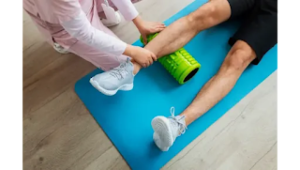
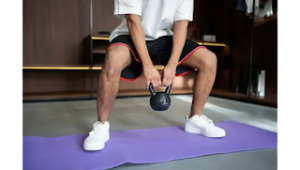

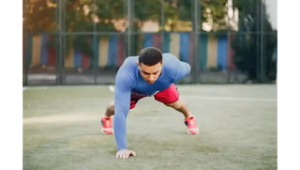

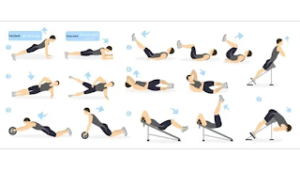
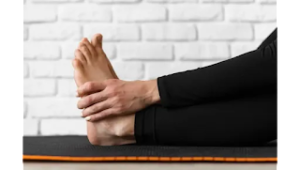




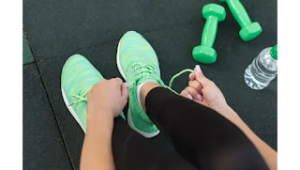

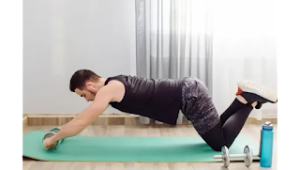



Pingback: Vanessa Williams Weight Loss 2024- All Weight Loss secrets
Pingback: Are Nutrigrain Bars Healthy | Healthy or Harmful?
Pingback: Weight Loss Drinks In Morning - Explain 05 Secrets
Pingback: Forearm Exercises with Resistance Bands-9 World Secrets
Pingback: Leanne Morgan Weight Loss- Explain 07 Secrets
Pingback: Are Peanut Butter Pretzels Good For Weight Loss in 2024
Pingback: Nick Avocado Weight Loss in 2024 - Fix Your Weight
Pingback: Chrissy Metz Weight Loss in 2024 - Fix Your Weight
Pingback: Yoga For Weight Loss in 2024 - Fix Your Weight
Pingback: Natalie Doan Earnheart Weight Loss in 2024 - Fix Your Weight